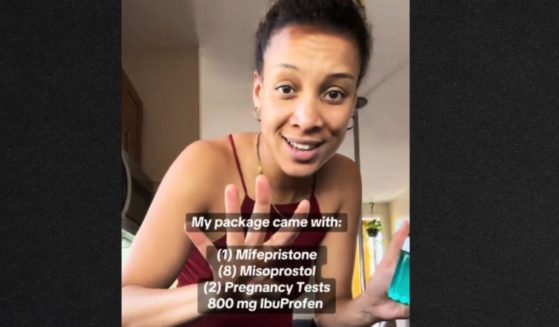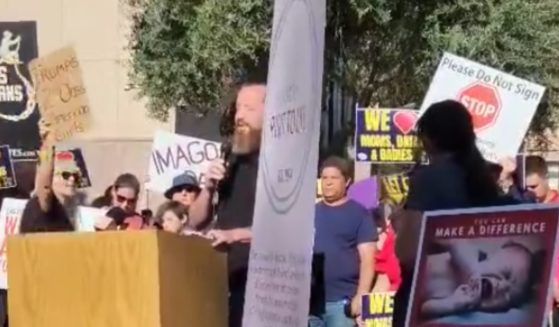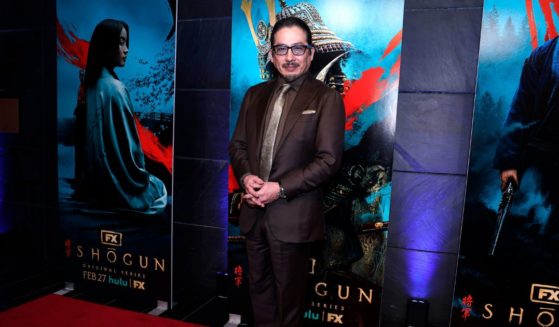Op-Ed: Kari Lake Deserves a New Election - Just Look How the Judge Was Fooled
Imagine that you are in a foot race, and under the established rules you and your competitor can run either of two routes: around the right side of the woods or around the left side.
During the race, however, you see your competitor take a shortcut right through the middle of the woods. That is cheating, and it is witnessed by you and three people standing on the sidelines, so you file a complaint.
The presiding judge in the case did not have time to read your complaint carefully, and he thinks you want to change the rules of the race. He says, “It is too late for that. You should have objected to the rules long ago.”
That analogy captures the essence of the incredibly misguided ruling rendered by the Kari Lake trial judge, Peter Thompson. He ruled that it was too late for Lake to seek a change in the election rules, but that’s not what she wanted. She simply wanted the rules to be followed.
There are 10 elements in Lake’s lawsuit, which was filed to dispute the results of Arizona’s Nov. 8 gubernatorial election. Let’s focus on just one right now — the issue of mismatching signatures.
Lake’s complaint correctly indicates that Arizona law (A.R.S. § 16-550) prescribes a two-step process for validating early ballots.
- The recorder or the recorder’s designee must “compare the signatures thereon with the signature of the elector on the elector’s registration record.” If there is a match, the ballot is accepted.
- “If the signature is inconsistent with the elector’s signature on the elector’s registration record, the county recorder or other officer in charge of elections shall make reasonable efforts to contact the voter, advise the voter of the inconsistent signature and allow the voter to correct.”
Based on the sworn statements of three whistleblowers, the two-step procedure prescribed by law was not followed in Arizona’s largest county, Maricopa.
Instead of attempting to contact the voters to have them “cure” their signatures (the second step), county managers simply reversed the signature rejections of reviewers or made them reprocess the signatures until a different result was obtained.
How did the judge get confused? In Katie Hobbs’ motion to dismiss, her attorneys threw in a red herring that should have given the judge a belly laugh. Instead, he was fooled by it. They said:
“This claim apparently rests on Plaintiff’s presumption that a voter’s ‘registration record’ is narrowly limited to a voter’s registration form, and further on the idea that any provision of the 2019 Election Procedures Manual that authorizes early ballot validation based on other signature exemplars is unenforceable” [emphasis added].
The word “apparently” is one of those fudge words used when you want to make up a storyline that does not actually exist, while protecting yourself from being charged with lying to the court. Nowhere in the complaint did Lake say or imply that the “registration record” comprises no more than a singular document. That is a lie — “apparently.”
But more importantly, Lake was asserting that part of the signature verification process, outlined in both the law and the election manual, had been eliminated.
Lake’s complaint states that Maricopa County had 32 employees performing signature verification and/or ballot curing. Three of the 32 workers became whistleblowers who made disturbing claims in sworn declarations.
Here are some of the statements of Andy Myers, one of the whistleblowers. His job was to cure signatures that did not seem to match registration records (complaint p. 17):
“The math never added up. Typically, we were processing about 60,000 signatures a day. I would hear that people were rejecting 20-30% which means I would expect to see 12,000 to 15,000 ballots in my pile for curing the next day. However, I would consistently see every morning only about 1000 envelopes to be cured. We typically saw about one tenth of the rejected ballots we were told we would see.”
“The most likely explanation for this discrepancy is that the level 2 managers who re-reviewed the rejections of the level 1 workers were reversing and approving signatures that the level 1 workers excepted and rejected.”
Myers concluded, “The level 2 managers were changing about 90% of the rejected signatures to accepted.”
The other two whistleblowers made similar statements, except they saw even higher rejection rates: 35 to 40 percent. The rejection of those signatures was reversed, often without contacting the voter.
The affidavit of whistleblower Yvonne Nystrom is particularly revealing. She stated that signatures were being reprocessed even though they had already been reviewed and rejected multiple times (complaint p. 18):
“These 5,000 to 7,000 ballots had already been through the full level 1, 2, and 3 process and been rejected. Therefore, I do not know why [we were] going through them again.”
The procedure described by Nystrom is clearly contrary to the dictates of the election manual. Those ballots should have been rejected unless the voters were contacted and they produced evidence establishing that the signatures were valid.
The third whistleblower, Jacqueline Onigkeit, seemed to suggest that the curing process was largely unsupervised and out of control (complaint p. 19):
“In order to perform the curing process, we were given a batch of stickers to place on a ballot. … One of the problems with the stickers was that nothing prevented a level 1, 2, or 3 [worker] from requesting a massive amount of ‘approved’ stickers and placing them on ballots. Again, observers did not watch any level 3 work and did not watch most of level 2 work. Once stickers were placed on ballots, there was no record on the ballot or elsewhere to determine who placed the sticker there.”
The bottom line is that the two-step process, prescribed in the code, was ignored or abused. Instead of contacting voters (the second step in the process), managers just reversed the findings of the reviewers or forced them to review again.
If that is the case, Hobbs was not necessarily elected by the people of Arizona — rather, she was elected by county managers.
The Hobbs legal team must have been jubilant when they learned that Thompson actually believed their description of what Lake was “apparently” alleging. Bizarrely, he cited Kerby v. Griffin (1936) as a basis for dismissing the claim (ruling p. 7): “Procedures leading up to an election cannot be questioned after the people have voted, but instead the procedures must be challenged before the election is held.”
In other words, he accepted Hobbs’ claim that Lake was quarreling with the established procedure for verifying signatures. If the judge had read the complaint more carefully, he would have realized that Lake was pointing out, based on whistleblower statements, that the law had not been followed. And that is something she could not have known until after the election was over.
There are other elements in the Lake complaint that should be carefully considered by the appellate court. If the judges review this lawsuit thoroughly and fairly, Lake should obtain judicial relief.
The views expressed in this opinion article are those of their author and are not necessarily either shared or endorsed by the owners of this website. If you are interested in contributing an Op-Ed to The Western Journal, you can learn about our submission guidelines and process here.
Truth and Accuracy
We are committed to truth and accuracy in all of our journalism. Read our editorial standards.












